Genre: Strategy Developer: Nihon Falcom Publisher: Sega of Japan Players: 1 Released: 1994
I regret selling Shining Force III. My logic at the time went something like, “Hey, I’ve played the game already, and this US version’s worth a decent amount while the Japanese game can be had for pennies. I can sell my copy, get the original import, and still come out ahead.” I figured the game isn’t terribly involved and the series has a recognizable combat system, so the language barrier shouldn’t be too bad. After all, I had already successfully played through my import Grandia some years earlier despite all of the moon language. Game Arts’ character sprites and portraits were expressive enough for me to vaguely follow the gist of what was on screen when I took Justin and his band of underaged girls over the “End of the World,” but ultimately it was the somewhat conventional RPG gameplay which made my playthrough possible.
One of the nice but little praised elements in games such as Shining Force and Grandia is how user friendly their GUI is. We all know what the genre expects of us in general, but it’s the slick interface which makes doing just that feel so effortless. To that end, I think the Megadrive Shining Force games would be playable even without understanding the language, and Lord Monarch: Tokoton Sentou Densetsu can welcome itself into that narrow group of import friendly RPGs. The game offers Western audiences English menus and commands easily accessed via images depicting the action (descriptions are in Japanese), making the basic mechanics of the game easy to follow. Sure, you won’t know the exact details of Alfred’s quest unless you can read squiggle, but the animated cutscenes and expressive character artwork will at the very least keep you entertained as you plow through the game’s 32 levels of resource management excitement.
It helps that Lord Monarch opens the game with The King sending Alfred on a tutorial quest designed to get players accustomed to the game’s controls and real-time battle system. Alfred’s goal in each map is simple — destroy all other opponents by defeating their generals. Much like his adversaries, each figure controls an army which expands across the map, building up “mana” kind of like Populous. As your followers build camps across the map, your power grows, indicated as hit points on your guy. These points accumulate so long as Alfred remains in his castle, but the moment you take him out for a spin, they deplete a bit with each step. Battles, naturally, further drain his mana health, so it’s important to keep tabs on your health to make sure you’re not just strong enough for trashing enemy homes and soldiers but also can skedaddle home with enough left in the tank to avoid dying of exhaustion.
Once back in his castle, Alfred’s health swiftly regenerates in time for the next trip. Combat in Lord Monarch hinges largely on managing frequent kingly excursions of conquest, seeking the best route for Alfred to get into enemy territory, do some damage to the opponent, and then retreat. Alfred doesn’t have to go this alone, however, as the player can knight his followers and send them in his stead. Alfred’s warriors can be dispatched to enemy territory to wreak havoc on their own, or you can micro manage them by selecting what or who their next target should be. He can order his followers to assemble into a single soldier to power them up, increasing their life line and thus the amount of damage they can cause before they expire. Of course, all of your followers are capable of combat and will defend themselves in an encounter, but by and large you’ll have them seeking out land to build camps to extend your reach and increase your mana.
Your soldiers have other uses, of course. You’ll use them to break or fix bridges, to destroy enemy mines, to chop down trees, and so on. Each new chapter (eight in all) presents some new gameplay wrinkle which will have you trying to figure out how to best manage your resources. I found it was smooth sailing until chapter four, a forest themed map in which you not only have to campaign against Woodhead and his guardians but also deadly seed spitting statues, giant hidden birds, and evil demon trees which will make life a pain. See, you’re not just fighting against enemy armies but also random monsters and other hazards, so strategies which earned you victories on one map will not necessarily work on the next. Lord Monarch hits that sweet spot of being challenging yet fair; the CPU doesn’t cheat nor does luck greatly impact gameplay. It’s up to you to survey the field and adjust your plan accordingly.
The maps are perfectly sized, and the game provides three different viewpoints during play. In the close-up view, you see all the neat sprite work but are obviously limited to a very small section of the field. At the opposite end, the game provides a display which shows the entire map but reduces everything to a simple colored square. Here you can keep an eye on all of your opponents’ moves (which is great), but it’s also not much to look at. The middle viewpoint is a compromise of the two, and it felt just right to me — the camera is high enough to where you can survey a good part of the field, there are trees and caverns instead of tiny pixels, and while your characters are still blocks, at least the boxes are large enough to have descriptive labels applied to better identify them. Lord Monarch lets you switch between all three views on the fly, so you’re free to adjust as the situation demands it. Controller shortcuts make it easy, too; you can hold down a button and use the D-pad to adjust your view, zip to the enemy kings, and raise and lower taxes without having to jump to any menu or drag a cursor to some option. A simple context menu pops up when you click on an object or character, and all of the available options are easily accessed and implemented. As much as I love Populous, it’s always great to play a strategy game built with a controller in mind.
It’s also great playing a strategy game as charming as Lord Monarch, as much of the genre seems chock full of serious themed military or fantasy settings. Alfred’s quest is narrated by a fat, little putto named Spanky, and both his allies and enemies maintain the vibrant, cheery look typical in anime. The lands are clean and free of the garish and dithered realism which permeate more serious conflicts, and although it’s not groundbreaking, I like how the game divides the screen which leaves plenty of room for the action while keeping important information docked along the right border. Lord Monarch is a Falcom property, but it’d fit right in with Sega’s Shining franchise, as even the soundtrack could pass for Shining in the Darkness outtakes with its similar instrumentation and themes. Lord Monarch isn’t exclusive to the Megadrive, but it certainly feels like a Sega game.
Of course, Western audiences have long enjoyed the Shining games while Lord Monarch – and, sadly, Nihon Falcom itself – remain largely in the dark outside of Japan. It’s a real shame that Lord Monarch never saw an English port. It’s a well designed game with crisp, colorful graphics; a nice soundtrack; and solid, interesting gameplay. While I doubt the storyline is particularly amazing, the quality of all of the other parts just makes me wish I could experience the whole game as intended. As I learned from selling my Shining Force III (and my Dragon Force… and my Panzer Dragoon Saga… sigh…), while you can stumble through a game and even enjoy pretty much everything it has to offer, it’s still not the same. If there’s any consolation, it’s that while I may not have fully understood what I’m missing from Lord Monarch, at least I had the pleasure of accompanying Alfred on his quest to do whatever it was we set out to do.
SCORE: 9 out of 10

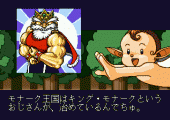
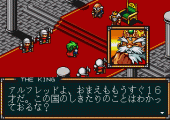
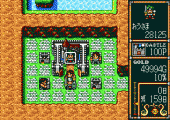
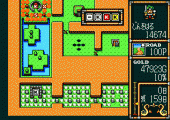
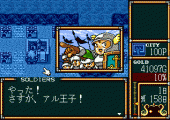
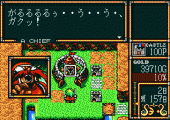
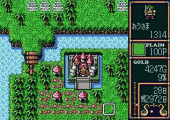
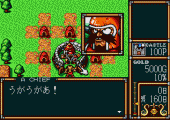
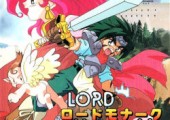
Pingback: simpleNewz - Sega-16 RSS Feed for 2014-10-12
Pingback: simpleNewz - Sega-16 RSS Feed for 2014-10-11